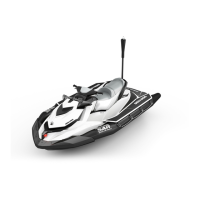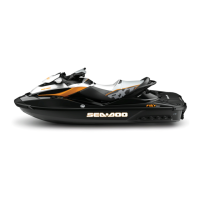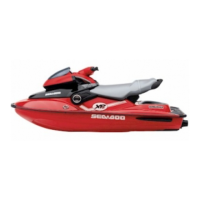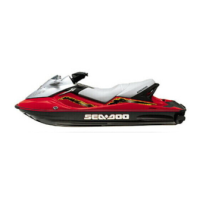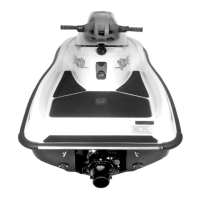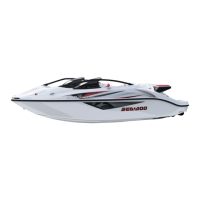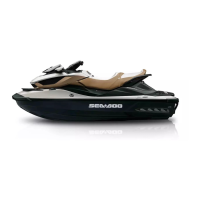SPECIAL SAFETY MESSAGES
Reminders Regarding
Operation
The performance of this watercraft
may significantly exceed that of other
watercrafts you may have operated.
Make sure you read and understand
the content of this Operators Guide to
become completely familiar with the
controls and operation of the water-
craft before embarking on your first
trip or taking on a passenger(s). If you
have not had the opportunity to do so,
practice driving solo in a suitable traf-
fic free area and feel the response of
each control. Be fully familiar with all
controls before accelerating above idle
speed. Do not assume that all PWCs
handle identically. Each model differs,
often substantially.
Always keep in mind that as the throt-
tle lever is returned to the idle position,
less directional control is available.
To turn the watercraft, both steering
and throttle are necessary. Do not re-
lease the throttle when trying to steer
away from objects. You need throttle
to steer. If engine is shut off, direc-
tional control is lost.
Like most watercraft, this watercraft
has no brake. Stopping distance will
vary depending on initial speed, load,
wind, and water conditions. Practice
stopping in a safe, traffic-free area to
have an idea of how long it will take to
stop the watercraft under varying con-
ditions. Do not use the watercraft's
reversetostop.
Practice docking in a safe, traffic-free
area to develop skills necessary to ma-
neuver the watercraft surrounded by
other boats and watercrafts in docks
area.
The personal watercraft's jet thrust
can cause injury. The jet pump may
pick up debris and throw it rearward
causing a risk of injuring people or dam-
aging the jet pump or other property.
Observe the instructions on all safety
labels. They are there to help assure
that you have a safe and enjoyable out-
ing.
Riding with passenger(s) or pulling
tubes, a skier or a wake boarder makes
the PWC handle differently and re-
quires greater skill.
Certain PWC models come equipped
with tow eyelets or a ski pole which
canbeusedtoattachatowropefor
a skier, tube or wakeboarder. Do not
use these attachment points or any
other portion of the watercraft to tow
a para-sail or any other craft. Personal
injury or severe damage may occur.
Combustion engines need air to oper-
ate; consequently this PWC can not
be totally watertight. Any maneuvers
such as figure eights that cause the up-
per deck to be under water may cause
severe engine problems due to water
ingestion. Refer to the
SPECIAL PRO-
CEDURES
and
WARRANTY
sections
contained in this Operator's Guide.
Engine exhaust contains carbon
monoxide (CO), which can cause injury
or death if inhaled in sufficient quanti-
ties. Do not operate the PWC in a con-
fined area or allow CO to accumulate
aroundthePWC,or inenclosedorshel-
tered areas. Such as when docked, or
when rafting. Be aware of risk of CO
from exhaust of other PWCs.
Know the waters in which the water-
craft is to be operated. Current, tides,
rapids, hidden obstacles, wakes and
waves etc. can affect safe operation.
It is not advisable to operate the wa-
tercraft in rough waters or inclement
weather.
In shallow water, proceed with caution
and at very low speeds. Grounding or
abrupt stops may result in injury and
watercraft damage. Debris may also
be picked up and thrown rearward by
the jet pump onto people or property.
________
SAFETY INF
ORMATION
________
9
